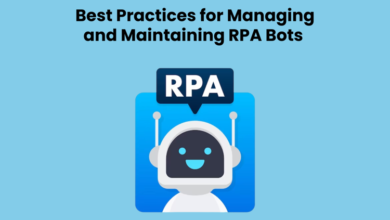Adobe PDF password protection – is it any good?
Adobe PDF password protection and certificate encryption are security measures that are commonly used to protect the contents of PDF documents from unauthorized access. These measures are intended to prevent unauthorized users from viewing, editing, or printing the contents of a PDF document. However, despite their intended purpose, Adobe PDF password protection and certificate encryption do not always succeed in preventing document sharing or restricting how users can use PDF documents.
One reason for this is that once a user has accessed a PDF document with the correct password or certificate, they are able to save an unprotected copy of the document to their own device. This copy can then be shared with others or edited without any further security measures. For example, a user might email a copy of an un-protected PDF to a colleague, who can then access the contents of the document without having to enter the password themselves. Similarly, a user might save a copy of a password-protected PDF along with the password to a cloud storage service, such as Google Drive, where it can be accessed by others.
Another reason why Adobe PDF password protection and certificate encryption do not always prevent document sharing or restrict how users can use PDF documents is that these security measures can be bypassed using basic tools. There are a number of tools available that can remove PDF passwords, allowing unauthorized users to access the contents of a protected document.
In addition to the issues mentioned above, there are also limitations to the types of security that can be applied to PDF documents. For example, while Adobe PDF password protection allows users to set a password that must be entered to view the contents of a document, protection against the document being printed or edited can be easily removed by recipients. Similarly, certificate encryption can be used to ensure that only users with the correct certificate can access a PDF document, but it does not prevent the document from being shared or edited once it has been accessed.
In some cases, organizations may need to consider alternative formats that offer stronger security measures. For example, encrypted email or secure file sharing platforms can be used to transmit sensitive documents in a manner that is more difficult to intercept or compromise. However, these solutions don’t control how documents can be used once they are decrypted.
One way that organizations can attempt to address these limitations is by implementing digital rights management (DRM) systems. PDF DRM systems allow organizations to set specific permissions for how a PDF document can be used, such as preventing printing or copying.
Another option for organizations looking to enhance the security of their PDF documents is to use watermarking. Watermarking involves adding a visible or invisible mark to a document that identifies the owner or source of the document. Watermarks can be used to deter unauthorized sharing or to trace the source of a leaked document. However, watermarks can also be removed or altered using the very applications used to add them. In other words, without DRM restrictions to prevent them being removed they are effectively useless.
It is important for organizations to regularly review and assess their security measures to ensure that they are adequately protecting sensitive information. This includes evaluating the effectiveness of Adobe PDF password protection and certificate encryption, as well as considering alternative security measures such as DRM.
Another important aspect of protecting PDF documents is ensuring that employees are properly trained on security best practices. This includes educating employees on the importance of protecting sensitive information, as well as providing guidance on how to properly handle PDF documents. This could include training on how to set strong passwords, how to recognize and avoid phishing attacks, and how to securely share documents with others.
Another risk to consider when using Adobe PDF password protection or certificate encryption is the possibility of password or certificate theft. If an attacker is able to obtain the password or certificate needed to access a PDF document, they can easily bypass the security measures in place. This can occur through various means, such as phishing attacks or keyloggers. To mitigate this risk, organizations should implement strong password policies and use two-factor authentication for accessing sensitive documents.
In addition to the risks of password or certificate theft, organizations also need to consider the risk of employee error. Employees may inadvertently share a password-protected PDF with an unauthorized party, or may accidentally leave a copy of a sensitive document in a public location. To mitigate this risk, organizations should implement policies and procedures for handling sensitive documents and provide training on best practices for document security.
Another risk to consider is the possibility of a security breach at the PDF application level. If an attacker is able to exploit a vulnerability in the PDF application being used, they may be able to access protected documents without needing the correct password or certificate. To mitigate this risk, organizations should ensure that they are using the latest version of their PDF application and apply any relevant security patches as soon as they become available.
One way to address the issue of employee error is through training and education. By educating employees about the importance of security and the risks associated with sharing or mishandling sensitive information, organizations can help to reduce the likelihood of employee mistakes or intentional violations. This could include training on how to handle and protect passwords, the proper use of PDF documents, and the consequences of unauthorized sharing or misuse.
In addition to employee training, organizations can also implement technical measures to prevent or detect unauthorized access or sharing of PDF documents. This could include the use of intrusion detection systems, firewalls, or other security software that can monitor network activity and alert administrators to potential security threats. Additionally, organizations can implement access controls and user authentication systems to ensure that only authorized users can access sensitive PDF documents.
Another option is to use document tracking or forensic watermarking technologies, which can help to identify the source of a leaked document and trace it back to the individual responsible. These technologies can be used to deter unauthorized sharing and help organizations to identify and address any security weaknesses in their systems.
Another potential issue with Adobe PDF password protection and certificate encryption is that they may not always be effective in preventing unauthorized access to a document. For instance, if a user’s password is stolen or if a certificate is lost or stolen, an unauthorized user may be able to access the document. Additionally, if a user shares their password or certificate with others, the security measures in place will be effectively bypassed. This can be particularly concerning for organizations that rely on these measures to protect sensitive or confidential information.
In order to prevent unauthorized access to PDF documents, it is important for users to choose strong, unique passwords and to keep their certificates secure. This may include using password management tools or regularly updating passwords to ensure that they are not easily guessable. It is also important for organizations to have policies in place that outline the proper handling and use of passwords and certificates, including guidelines for sharing this information.
Overall, while Adobe PDF password protection and certificate encryption can be effective in protecting the contents of PDF documents, they are not foolproof and may not always be sufficient to prevent unauthorized access or sharing. Organizations should consider a range of security measures, including PDF DRM, as well as educating their employees on best practices for protecting sensitive information.



